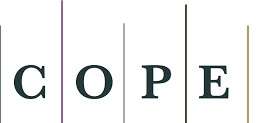Economic benefits for improving rural sanitation services in the district of Taraco, Puno region
DOI:
https://doi.org/10.26867/se.2022.v11i1.127Keywords:
willingness to pay, consumer surplus, social evaluation, contingent valuation method, net present valueAbstract
The Basic rural sanitation services in Peru are a priority for the government, because they improve the quality of life of the rural population. These projects must justify their execution incorporating economic benefits that guarantee their post-investment sustainability. For this purpose, this research considered a survey of 173 heads of families, whose objective is to estimate the economic benefits through the contingent valuation method (CVM) with the referendum format and the consumer surplus method (CS) through the social value of the time and higher consumption. It is shown that families are willingness to pay (WTP) S/. 8.38 per month to access the sanitation service and the economic benefit for the consumer surplus is S/. 46.43 monthly per family. Regarding social evaluation; through the EC the net present value is S/. 856,485, however, for the CVM they would only cover the costs of operation and maintenance. The WTP is mainly conditioned by family income, educational level, gender and the distance to carry water. Therefore, the investment must be assumed by the state, since these projects guarantee their sustainability, mainly covering the costs of operation and maintenance.
Downloads
Metrics
References
Adeoti, O., & Fati, B. O. (2022). Factors constraining household willingness to pay for piped water tariffs: thecase of Ekiti State, Nigeria. H2Open Journal, 5(1), 115–133. https://doi.org/10.2166/h2oj.2022.135
Azqueta, D. (1994). Valoración Económica de la calidad ambiental. Colombia: Primera edición, Mc-GrawHill.
Bullon G. V. (1996). Valoración económica del humedal la florida por servicios de recreación, una aplicación delos métodos costo de viaje y valoración contingente. Bogotá, Colombia: Articulo publicable, Universidad de los Andes, Facultad de economía.
Cabezas Sánchez, C. (2018). Enfermedades infecciosas relacionadas con el agua en el Perú. Revista Peruana de Medicina Experimental y Salud Publica, 35(2), 309–316. https://doi.org/10.17843/rpmesp.2018.352.3761
Cameron, T. A. (1988). A new paradigm for valuing non-market goods using referendum data: Maxi-mum likelihood estimation by censored logistic regression. Journal of Environmental Economics and Management, 15(3), 355–379. https://doi.org/10.1016/0095-0696(88)90008-3
Castro R. & Mokate K. (2003). Evaluación económica y social de proyectos de inversión. (F. de E. E. U. A.C. S. A. Universidad de los Andes (ed.); Segunda). Ediciones Uniandes: Alfaomega Colombiana S.A.
Greene, W. H. (2003). Econometric analysis. (Prentice Hall (ed.); Fifth Edit). Prentice Hall.
Hanemann, W. M. (1984). Welfare evaluations in contingent valuation experiments with discrete responses. American Journal of Agricultural Economics, 66(3), 332–341. https://doi.org/10.2307/1240800
Hanemann, W. M. (1994). Valuing the environment through contingent valuation. The Stated Preference Approach to Environmental Valuation: Volume III: Applications: Benefit-Cost Analysis and Natural Resource Damage Assessment, 8(4), 19–43. https://doi.org/10.1257/jep.8.4.1
INVIERTE.PE (2019). Directiva general del sistema nacional de programación multianual y gestión de Inversiones. Pub. L. No. Resolución directoral N°001-2019-EF/63.01, 15. https://elperuano.pe/normaselperuano/2019/01/23/1734202-1/1734202-1.htm
Lim, S. R., Park, D., Lee, D. S., & Park, J. M. (2006). Economic evaluation of a water network systemthrough the net present value method based on cost and benefit estimations. Industrial and Engineering Chemistry Research, 45(22), 7710–7718. https://doi.org/10.1021/ie060565p
Ministerio de economía y finanzas. (2011). Saneamiento básico. In Guía Simplificada para la Identificación, Formulación y Evaluación Social de Proyectos Saneamiento Básico en el Ámbito Rural, a Nivel de Perfil.. https://www.mef.gob.pe/contenidos/inv_publica/docs/instrumentos_metod/saneamiento/Diseno_SANEAMIENTO_BASICO.pdf
Ministerio de Economía y Finanzas. (2022). Guía General para la Identificación, Formulación y Evaluación de Proyectos de Inversión. Invierte.Pe, 200. https://www.mef.gob.pe/contenidos/inv_publica/docs/Metodologias_Generales_PI/GUIA_EX_ANTE_InviertePe.pdf
Ministerio de vivienda, construcción y saneamiento. (2011). Diagnóstico de la situación de brechas de infraestructura o de acceso a servicios públicos del sector vivienda, construcción y saneamiento. https://cdn.www.gob.pe/uploads/document/file/1552487/Diagnostico de Brechas.pdf
Otter, P., Sattler, W., Grischek, T., Jaskolski, M., Mey, E., Ulmer, N., Grossmann, P., ..., Ndumwa, C. (2020). Economic evaluation of water supply systems operated with solar-driven electro-chlorination in rural regions in Nepal, Egypt and Tanzania. Water Research, 187, 116384. https://doi.org/10.1016/j.watres.2020.116384
Perez-Pineda, F., & Quintanilla-Armijo, C. (2013). Estimating willingness-to-pay and financial feasibility in small water projects in El Salvador. Journal of Business Research, 66(10), 1750–1758. https://doi.org/10.1016/j.jbusres.2013.01.014
Sköld, N. P., Bergion, V., Lindhe, A., Keucken, A., & Rosén, L. (2022). Risk-Based Evaluation of Improvements in Drinking Water Treatment Using Cost-Benefit Analysis. Water (Switzerland), 14(5). https://doi.org/10.3390/w14050782
Tudela-Mamani, J. W., Leos-Rodríguez, J. A., & Zavala-Pineda, M. J. (2018). Estimación de beneficios económicos por mejoras en los servicios de saneamiento básico mediante valoración contingente. Agrociencia,52(3), 467–481. https://dialnet.unirioja.es/servlet/articulo?codigo=6423191
Vásquez F., Cerda, A., & O. S. (2018). Valoración Económica del Medio Ambiente. (Issue April).
Vásquez, W. F., Mozumder, P., Hernández, J.A., Berrens, R.P. (2009). Willingness to pay for safe drinking water: Evidence from Parral, Mexico. Journal of Environmental Management, 90(6), 3391-3400. https://doi.org/10.1016/j.jenvman.2009.05.009
Downloads
Published
How to Cite
Issue
Section
License
Copyright (c) 2022 William G. Parillo-Mamani

This work is licensed under a Creative Commons Attribution 4.0 International License.
















